
VERDI RE LEAR
PROJECT FOR THE VERDI FESTIVAL 2015
CThe exploration of Shakespearean dramaturgy continues with a new performative-musical chapter dedicated to King Lear - in the Verdi/Shakespeare duo. In the frame of Festival Value 2015, Lenz creates a contemporary musical and visual workof sul Re Lear, the 'absent' work of Giuseppe Verdi, which sees the renewal and expansion of an important artistic collaboration with the composer of electronic music Robin Rimbaud aka Scanner and the Conservatory of Music “A. Boito” of Parma.
- Photo
- Intro
- Credits
- Conversation on Verdi's King Lear
- Theaters of Sound
- Robin Rimbaud aka Scanner
- Video
- Press
- Brochure
«It's a further one, bold and powerful dramaturgical investigation between past and present, between memory and contemporaneity, the one completed by Maria Federica Maestri and Francesco Pititto, project around and inside a work that does not exist, of which there are scattered traces, fragmented clues. The unfinished one is King Lear by Giuseppe Verdi, opera never set to music and of which only the libretto by Antonio Somma exists containing the composer's corrections. Work always desired, aimed at delving into the soul of the figure of the king/father/madman, but never completed". The well-known theater critic Giuseppe Distefano, after the first presentation of Verdi's King Lear – The Opera that isn't there_Foreword to the 19th edition of the Natura Dèi Teatri International Festival last December, note down: «The pictorial-installation vision is the silhouette of a motionless group arranged around a throne placed at the bottom of the scenic box and made evanescent by the three transparent veils where, at multiple levels of projections, images of a man flow, Lear, whose voice we hear. On the details of his body, curled up or slumped over, the camera's eye lingers almost as if mapping it, investigating the movements and wounds of the soul […] The plastic depositions from the throne to the ground find other moments of authentic emotion, the slow walk and positioning, dragging a rope on a leash and the scattered "arias" - in the finale by Simon Boccanegra, “As in this dark hour…” – which dot the Verdi universe on the tragedy of fatherhood, rendered by Lenz as a scenic epiphany of desire".
Verdi Re Lear lives in the two large rooms of Lenz Theatre, with the dynamic audience invited to transit between the two spaces. Maria Federica Masters, who takes care of the dramaturgy of the space of the show, installations and costumes, suggests the reasons for this unusual choice: «The temporal concatenation of two separate spatial planes preserves and enhances the duplicity of the semi-virtual image of this work that connects real and non-real, traces and desires: the materiality of bodies, dialoguing with the immateriality of the image, generates a dream-image. Built for tears, subtractions and jumps, the semi-virtual image produces a continuous disconnection from the coherent image of the world; similarly the spectators in delocalized use, in subjective transit, in the passage from space to space, they lose the unity and dramatic linearity of the traditional vision, and in total assonance with the artistic form of the work – give scenic form to a desire – recompose their own personal souvenir work".
Conclude Francesco Pititto, research manager, playwriting, imagoturgy and direction of this sidereal project: «Giving shape to a desire, after having explored its primary impulses and its most hidden manifestations, It is a fascinating path of any linguistic research; dressing a ghost and seeing it move only through the movement of the fabrics is already having delivered it to the real world which, shakespearianamente, it is made of dreams and nothing".
Musical consultancy for the selection of repertoire pieces Verdi Re Lear it is by the Maestro Carla Delphrates, the singing consultant is Prof. Donatella Saccardi. Performer: Valentina Barbarini (Cordelia/Delia), Barbara Voghera (Fool/Mica), Joseph Barigazzi (Lear in immagine). Singers: Haruka Takahashi (Price/Price, soprano), Ekaterina Chekmareva (Goneril/Gonerilla, mezzo-soprano), Gaetano Vinciguerra (double Lear, baritone), Lorenzo Bonomi (doppio Lear/Edgar/Edgardo, baritone), Andrew Pellegrini (double Lear, basso), Adriano Gramigni (Gloucester, basso). Voice over by Rocco Caccavari. In scena Rocco Caccavari, Paolo Maccini, Franck Berzieri, Charles Right e Paolo Pediri. Assistant director: Valeria Borelli. The technical direction is from Alice Scartapacchio, the production is by Lenz Foundation. Verdi Re Lear is created in collaboration with the Conservatory of Music “A. Boito” of Parma.
Enrico Pitozzi on Verdi's King Lear
Spectra | Anatomy for a theater of voices
There are always at least two image planes.
One refers to the regime of the visible, the other to the sound one. The one, that of the visible, acts immediately; due to this characteristic it can be localized, visible precisely. The other, the sound one, it is characterized by a certain discretion, acts as if in the shadows, in a widespread way, is expressed in duration; due to this characteristic it cannot be localized, we cannot establish exactly from which point in space it comes. AND acousmatic, its peculiarity is not evidence, but the depth; its logic is not that of the event, but rather that of effectiveness.
II. They could be summarized as follows, in my opinion, the traits that illuminate the version of Re Lear by Verdi – inspired by Shakespeare – which Lenz Rifraczioni – is now bringing to the stage for Verdi's centenary. Work for which the booklet exists, but not the musical score. There are parole, not their sound temperature. We are like that, Lavagetto says it well, in front of “The Phantom of an Opera”.
Ghost, Indeed, derives from Greek ϕάντασμα and organization around ϕαντάζω "to show", I imagine "apparire". On one side, this declination refers to making an image of something that does not yet have its status. On the other, Instead, ghost says something that "hints", "suggests" without fully saying, leaves glimpse because it testifies to an incompleteness, or rather the pervasiveness of a him which marked all of Giuseppe Verdi's production; only that he did it in secret, like an intense and widespread shock, up to encompass much of his operatic production which, unlike this one Lear unfinished, has seen the light.
So it is in this territory made up of scattered fragments, debris, magnetic elements and returns that draw the constellation around Lenz's version. For this reason a Re Lear ghostly, in which is the scenographic-installation composition signed by Maria Federica Maestri, that the imagery of Francesco Pititto, they state it openly, giving rise to a continuous blur – an inability to see clearly – which produces suspension, as in one evocation or one evaporation: in any case, and'epiphany pending.
III. What then is the strategy that Lenz adopts in this Verdi vision? Answering this question puts us back in line with the starting point, with the two planes of the image mentioned above.
The suspicion is that Maestri and Pititto work by subtraction - another operational component of Verdi's musical thought; a subtraction that releases the enthralling force of music, where the word of the song becomes sonority, phone: matter that says, before and beyond the very meaning of the word, the sound impulse of the voice. What we might call proof of this, following Roland Barthes, a write aloud to which Verdi, let's remember it again – of this Lear the musical score is entirely missing, but the libretto exists – it seems to be watching and which Lenz underlines in the staging: the musical element is the voice itself, it is not accompanied by any sound that is not an expression of vocality.
Verdi's, in other words, it is the actual composition of a choir of voices, sound material through which to liberate the creative power of music. And it is here that Lenz takes a decisive step in the direction of Verdi – because that is what it is about, of a Re Lear conceived in the spirit of Giuseppe Verdi's music. The singers present on stage – two actresses as Fool/Mica and Cordelia/Delia, a Lear actor on video, two baritones to give shape to the double Lear in scena, a soprano Nerilla, and a mezzo-soprano Rosane/Delia – are arranged as sound activators, rumors that literally appear as if from an afterlife, figures that actualize the power of singing. There is a veil, at the same time material – tulle – and immaterial, almost metaphysical, that accompanies this work.
I wouldn't know how to name it other than tracing it back to the pulse of life, because it calls existence itself into question: there is something that touches the bottom of life and its prolongation, as well as reason and its processes, it is a sort of victory against death that is evoked on stage, because there is no other truth other than this coincidence with the present, but always with a slight difference, like from the side, as if to mark – despite everything – a lack, a not yet, an unfinished one.
Why this?
Because the music here, in the geometry of Verdi's thought, it is the image of reason or better, as Gille Deleuze says, the reason in action. Music has the power – and this staging by Lenz claims it on several occasions – to trigger the movement some things; he literally makes things exist starting from their dark background, unmentionable. Suspend time, delays the disaster.
To give strength to this becoming of the forms that follow one another on stage, collaboration with the sound artist Robin Rimbaud aka Scanner Who, in the wake of librettist thought, develops a series of sound compositions, in an assemblage that is not meant for accompany the singing, rather to outline what we could call a real sound dimension of the image: l’sound image – its potential atmospheric – it is the one that gives the background texture to the scene and on the basis of which the visual image is defined. So, just as there is a visual image, an auditory one seems to emerge forcefully on Lenz's scene. Here it is not just a question of grasping what manifests itself to the ear: this image to which Scanner contributes, it has to do with what is inside listening, it is necessary to identify its characteristics and the collected point in which the intensity that turns a sound material into an image acts and that, consequentially, redraws the characters ofI listen. It opens the space for the voice, in scena, can leave a trace. Fleeting, of course, like a flash. A spot of light on an anthracite background. It is therefore the sound – in the double perspective of Theater of voices and the acoustic atmosphere – which dictates the temperature, the tuning between the elements of the scene. In this frame the visual image is its counterpoint, a plan, a vanishing point.
IV. The viewer is thus ideally positioned inside of of this sound perimeter, in front of the vision, position from which it is possible to experience all their variations, their imperceptibilities. Starting from this point collected in the sound – from the one we called acoustic image – rebuild the musica that the sound hides. Perhaps this is precisely the challenge that Lenz takes up with this staging impossible. Impossible because, literally, it is beyond possibility: magmatic nucleus, indefinite, to which we try – despite everything – to give shape.
It doesn't stay, at this point, than solving the last step: of what I listen let's talk, so, with this work?
Listen Who, as in other Lenz productions, it is a becoming: become sound, become phoneme, materia, vocal pulse. Following this process requires a perceptive extension of listening, a letting the sound penetrate and become, at the same time, sound when listening. Only in this way does imagoturgy - the logic of viewing images - acquire its full effectiveness: acts latently.
A tympanic body is therefore needed, a prism body, to perceive these ghosts: just a impossible ear capture the inaudible; only an eye capable of penetrating forms sees Really and for the last time what is in front of him.
VERDI RE LEAR
and Re Lear by Somma-Verdi first version with the variants and King Lear by William Shakespeare
Research, dramaturgy and imagery, regia | Francesco Pititto
Music + live electronics | Robin Rimbaud aka Scanner
Installations and costumes | Maria Federica Masters
Music consultancy | M° Carla Delphrates
Singing consultant | Prof. Donatella Saccardi
Performer | Valentina Barbarini, Barbara Voghera, Joseph Barigazzi
Singers | Haruka Takahashi, Ekaterina Chekmareva, Gaetano Vinciguerra, Lorenzo Bonomi, Andrew Pellegrini, Adriano Gramigni
you over | Rocco Caccavari
In scena | Rocco Caccavari, Paolo Maccini, Franck Berzieri, Charles Right, Paolo Pediri, Marco Cavellini
Treatment | Elena Sorbi
Organization | Ilaria Stocchi
Communication | Violetta Fulchiati
Press office | Michele Pascarella
Technical direction | Alice Scartapacchio
Assistant director | Valeria Borelli
Technical team | Gianluca Bergamini, Gianluca Losi, Stefano Glielmi, Marco Cavellini
Production | Lenz Foundation
In collaboration with Conservatory of Music “A. Boito” of Parma
CONVERSATION ON GREEN KING LEAR
Ridotto of the Teatro Regio of Parma
Friday 2 October 2015, ore 17.30, Free admission
The unfinished Lear, never set to music but always desired, he is a virtual presence in several works by Giuseppe Verdi. His silhouette projects up Rigoletto, Luisa Miller, The Troubadour, Nabucco, The force of Destiny, to testify and the unsatisfied desire to delve into the most intimate and human soul of the king/father/madman.
With the participation of FRANCESCO PITITTO, MARIA FEDERICA MAESTRI,
CARLA DELFRATE, DONATELLA SACCARDI
Theaters of Sound > Conference on Verdi's King Lear
Lenz Foundation for Verdi Festivals 2015
THEATERS OF SOUND
Il 13 October from hours 16 at 19 the conference takes place at Lenz Theatre Sound theaters, coordinated by Enrico Pitozzi (Lecturer at the University of Bologna), with the participation of Maria Federica Masters e Francesco Pititto (Lenz Foundation), Robin Rimbaud aka Scanner (Composer), Massimo Marino (Teacher at the Arrigo Boito Conservatory in Parma), Weekend Finter (Lecturer at the University of Giessen – Germania) e Marco Capra (Professor at the University of Parma and vice-president of the Verdian Studies Institute).
Curator: Valeria Borelli.
The attention that the current scene reserves for sound composition, contributes to putting the dramaturgical potential of sound back at the center of reflection. This corresponds to stating that contemporary theatre, in its various manifestations, he developed an autonomous sound thought, that goes beyond the frame of reference of "stage music", outlining the contours – still to be defined – of a Theater of sound. Such a setting – of which the staging of King Lear, by Giuseppe Verdi (for which the booklet exists, but not the musical score) by Lenz Rifrazioni, in collaboration with Robin Rimbaud aka Scanner, it offers an opportunity for discussion – it affects not only prose, but it is also measured with the repertoire of the Opera Theatre, interpreted according to the «spirit of music». Furthermore, in this picture, the conception and use of the voice on stage changes. Following the driving force of music, the word and the singing are offered to listening as phoné: sound matter that transcends the very meaning of the word. The scene thus becomes a diffused sound environment, that the spectator is called to inhabit.
Enrico Pitozzi, University of Bologna
Scanner, stage name of the musician, writer, English artist and critic Robin Rimbaud, is synonymous with experimentation between the arts and a unique style in the international musical and artistic panorama. The musician crosses the experimental territories between sound, space, image and form creating a multi-level sound platform that exploits technology in an unconventional way. He is considered among the most important composers on the world electronic scene. In his first controversial works he used the scanner, a radio interception tool, to create his musical compositions. Excerpts from cell phone conversations of unsuspecting users, civil services such as ambulances or surveillance services are sampled and inserted into the artist's music as an integral part of a carpet of sounds. This path, who intended to discover the hidden sounds in modern metropolises, she has received the admiration of artists such as Bjork, Aphex Twin and Karlheinz Stockhausen. Scanner has collaborated with artists of different genres: dai Radiohead a Bryan Ferry e Laurie Anderson, from Rambert Dance to Random Dance Company, il Royal Ballet e Merce Cunningham, by musicians such as Michael Nyman and Luc Ferrari, to artists like Steve McQueen, Mike Kelley, Derek Jarman, Carsten Nicolai e Douglas Gordon. Dal 1991 is engaged in live concerts, compositions, installations and soundtracks: the albums Mass Observation (1994), Delivery (1997) e The Garden is Full of Metal (1998) they have been defined by critics as fundamental works for the contemporary electronic music scene. In the 1994 the work Sound Surface, made with Stephen Vitello, it was the first soundtrack commissioned by the prestigious Tate Modern Gallery in London. He has exhibited and created works in the most prestigious contemporary art spaces, including the SFMOMA in the United States, the Hayward Gallery in London, the Pompidou Center in Paris, la Tate Modern & Tate Britain in London, he Palais des Beaux-Arts di Lille, the Kunsthalle in Vienna, the Bolshoi Theater in Moscow and the Royal Opera House in London. His work has been featured throughout the United States, in South America, in Asia, in Australia e in Europa. Already a guest at Lenz Teatro in 2007 for the review “As a Little Phoenix” and protagonist of the edition 2007 of the Natura Dèi Teatri Festival with the performance From the Head to the Hip, for the edition 2008 of the Festival created the original music by DELEGNACI, GIRL, YOUR EYES, created by Lenz Refractions by The Ballad of Little Red Riding Hood by Federico García Lorca. For the edition 2009 of the Natura Dèi Teatri Festival created the performance Landscape & Memory. In the 2012 he created musical projects for the London Olympics.
More info: Facebook Twitter Website Soundcloud Flickr
Verdi's failed King Lear, rebuilt by Lenz Refractions
by Giuseppe Distefano, Il Sole24ore, 17 October 2015
“The earth, rejects the deceased from the womb!”. It is the opening song that is heard in silence. They are ghostly figures, apparitions of the mind of a dream/nightmare, those that vibrate in the dark space of a room inhabited by a wheelchair like a throne, and two rows of hospital beds with black fur coverings on which real people lie, but who belong to the kingdom of the dead. Just touched by a hand that brings them back to life, one by one they will take on the consistency of characters so to speak, to be, to recall. They are the "sensitive" actors, marked in mind and body, whose participation restores the psychophysical truth to the different representations of madness present in the story of "King Lear". They embody the harshness of real existence and Shakespearean drama, of the sovereign deceived by the flattering daughters to whom he divided his kingdom by trusting them out of pride, instead denying the only sincere and faithful daughter, Cordelia, finally rescued by her in the madness of the wanderer and premature senility due to the defeat of the betrayal. Artists of undisputed directorial and scenic quality due to the uniqueness of their work and research, Francesco Pititto and Maria Federica Masters of Lenz Rifrazioni, are the creators of this important and ambitious theatrical-installation operation which undermines any narrative linearity in favor of visual and auditory immersion, “sound image with atmospheric potential”, which incorporates words, Images, bodies, canto, and music, in a unique dramaturgical. Two setups in one setup, with the public passing through two places, with an exchange of rooms between the first and second acts: two paths on the path towards the recomposition of an unfinished work, or that "King Lear" never set to music to which Giuseppe Verdi dedicated himself without completing it and of which only the libretto by Antonio Somma exists containing the composer's corrections. Pititto and Maestri ventured into an "impossible" invention-reconstruction by staging, as part of the Verdi Festival 2015 of Parma and Busseto, “Verdi Re Lear – The Opera that isn't there” drawing on scattered fragments, to virtual presences of other works where the tragedy of fatherhood and madness lives. Performative writing – which comes alive inside the scenic box of transparent gray veils where, enlarge, the real and virtual images of faces “look” at us -, lives on the music of the well-known English electronic composer Robin Rimbaud aka Scanner. This intertwines with the echoes of Verdi's music, creating a sound density where opera arias performed by two sopranos and two baritones on stage are inserted., double Lears together, In the end, in the presence of Rocco Caccavari, (doctor and former member of parliament for three legislatures), whose face marked by suffering says more than any words. In the passage to the other place of the representation, the pictorial-installation vision of a motionless group arranged around a throne in the background dominates, made evanescent by the transparent veils where, at multiple levels of projections, the images of Lear flow, whose voice we hear. On the details of his body, curled up, the camera lingers as if to map the movements and wounds of the soul. The king summarizes the story of fathers and sons overwhelmed by madness and blindness, in a lump of betrayed affections. They are opened by the advance of the sensitive actress Barbara Voghera, whose voice and presence, then dragging a rope on a leash, he dresses himself in that authentic truth that he sees in the fool, in the fool, the only one who can afford real words. The other acting figure who wanders is Cordelia (Valentina Barbarini) wearing a fur coat that he will place on the fool's shoulders, no longer a rebellious daughter but an expression of grace. Further expanding the investigation, here is conferring on Shakespeare's Lear, in addition to madness, the unprecedented dimension of mother, which is thus loaded with dense dramatic refractions and symbolic bursts of meaning, after singing Il Trovatore's “Condotta ell'era in stati”., the terrible memory of the mother, with the words of the King: “Where have I been? Where am I?…”. In this poetic and continuous short circuit between the verses of the opera libretto and those of Shakespeare's text, visual and musical intrusions with powerful references gather together. Like the initial electronic notes of Mameli's Italian anthem which fails to complete, while on the ground, half naked, the two baritones – doubles Lear – and Cordelia move in plastic deposition.
Verdi Lenz Re Lear
by Rossella Menna, Double zero, 15 October 2015
Even the great masterpieces, those who in fact, in centuries, they continue to name mysteries through the precision of magical forms, I am solo regurgitations of a great silence, unconscious impulses, interruptions, forgetfulness – miraculous, since they are truly inexplicable – of the aphasia that characterizes the life of those who spend their lives summoning emptiness. More often aphasia wins: abortions far exceed births. The artist continually aborts, and the more it creates the more it aborts, for every birth produces failure, every impulse testifies to an inadequacy, betraying the vertigo that pushed him into shape; and it is increasingly difficult: but the pain, precisely, sometimes you forget, fortunately. And they are born The Sleepwalker and the Norma in which there are fragments of a Ernani that Bellini never managed to write, for example. E Rigoletto, The Troubadour, Nabucco, The force of Destiny, from the seeds of an unfulfilled desire of Giuseppe Verdi who throughout his life planned to write an opera from Re Lear of Shakespeare, the unsurpassable momentum, his masterpiece. Of the phantom work – not unfinished, but aborted, precisely – only Antonio Somma's libretto remains, with corrections, massive, of the composer. The abortions of operas of which only the librettos exist, I'm no man's land: snubbed by musicologists who are not interested in what is not set to music, completely ignored by theaterologists who are not at all interested in opera. Nevertheless, between the lines of corrections, in the relationship between playwright and composer, inside the workshop of a future abortion, there is enormous potential for meaning: there are still vibrant traces of an artist's desperate breaking of a limit. There is his relationship with the world, before it perfects into a waste. And since “nothing is, except what is not", to quote Shakespeare himself, In the Re Lear that isn't there, there is Verdi, who is King Lear betrayed by the daughters he trusted out of pride, rescued instead by his only faithful daughter, exiled; not due to thematic overlap, but for desiring investment, since the very encirclement of an absence releases the most sincere presence. Verdi Re Lear in fact it is called Verdi's absent opera che Lenz Foundation, collective founded and directed by Maria Federica Maestri and Francesco Pititto, dal 1985 active in the field of visual performing arts, exploring contemporary language at very high levels, presented – significantly – as part of the Festival Value 2015 of Parma and Busseto. All in all it is understandable that only artists could think of approaching the ghosts of another artist, and on the other hand, only the energy of an approximation, the pathos of a distance, the precision and evanescence of a desired form can evoke a previous encirclement, another wish, precisely. The public passes from a first room to a second inhabiting a single installation, without consequentiality, from the color room to the black and white room or vice versa, by singing uttered from a visible mouth, to what is only heard, suggested as a reminder, by logical sequences that speak of power, scepters and betrayals, to overlaps, grafts, ombre. The spectator chases, recognizes, gets lost, he senses, like in a nightmare, which at times is Lear's, but by Verdi, or instead of Cordelia, or ours, or we no longer understand whose, which neither begins nor ends, swallows and returns obsessions, insistence, fears, abandon, tenderness, exhortation, fragments of words referred to often, especially if the one speaking is the fool – Barbara Voghera, now historic extraordinary "sensitive" actress of Lenz - only the vocal framework remains, the babble, in the effort of pronouncing, of forcefully regaining a corporeality, a visceral sense to words whose meaning only tells stories. In one of the rooms, in a double projection, on two screens that overlap in depth, a naked man crouched on the ground, Lear, sympathizes, literally, what happens on stage, between the two screens; the removal of the royal scepter pronounced by two singers wounds him, just as we see him madly pouring black liquid on his head, black like the black hair of a young and still sovereign king, black like his hair, who makes himself black fur who tries to dress everything, to regain lost power. The farewell song of the exiled Cordelia, “pilgrim and orphan” as in the air of Force of destiny, it makes his belly contract, her voice seems to dig like a probe into his body, the eye of the camera, whose action seems to be directly controlled by the pitches and volutes of the voice, digs deep into the pores of the skin; it's still, we don't understand if it's the singing that shakes the body, like an accusation, or the body, in the very act of moving, to produce sound with movement, the oscillation, to regurgitate the song, like a remorse that comes from the insides; we see and hear, indistinctly, we understand by synesthesia, for we are understood. Synthesis, indiscretion, massa, evanescence, contradiction and clarity, vastness and precision: really like in a dream, but with the linguistic rigor through which theater can summon ghosts. Precisely at the unraveling of the form, insisting on a practice of theoretical reflection that has become customary for the company over the years, Lenz dedicated a conference entitled ai Sound theaters, coordinated by Enrico Pitozzi, professor at the University of Bologna, and curated by Valeria Borelli with guests Helga Finter from the University of Giessen and Massimo Marino, teacher and theater critic. An extremely precious and rare opportunity, to sum up, synthesize and condense in a multi-voiced speechalready quite structured reflections, from a scientific point of view, about the dramaturgical potential of sound in contemporary theatre; but more precisely on slippage, on the epistemological fracture that has occurred with respect to the very status of what is recognized as theatre, theatricality, with the gap triggered by performativity, from overcoming the instance of representation in favor of an instance of self-referentiality; an overcoming that in the voice - as a sound that refers to itself before a meaning -, in the dimension of the vowel as a body, life that pulsates before and between the meshes of verbal meaning,he found an exceptional viaticum. Verdi Re Lear offer, evidently, the perfect opportunity to try to clarify the point. Lenz explores the gap between desire and the fulfillment that does not happen (and which by statute does not he must happen), moving between sighs, in the occurrence of the experience before it is exposed to judgment and dies, evoking the sensitive excrescences of the artist's inconsolability, the masterpieces, the arias and duets from Nabucco, andRigoletto, and The force of Destiny, and Luisa Miller (but not only), works – traced by Carla Delfrate, to whom Pititto and Maestri have entrusted the musical research - in which some elements of that original desire are scattered. A real Verdi is grafted onto a potential Verdi, according to a singular subtraction procedure: the real work is stripped of music to give body to a non-existent work: remove an object just as you name it, to produce desiring emptiness, scary, perturbanza. More in detail, the sound dimension of the installation develops along a double path. On one side Robin Rimbaud aka Scanner, one of the most important composers on the world electronic scene, gives color to the scenes (and precisely in terms of colors he confesses to having dialogued with Pititto during the creation phase), almost taking on diegetic responsibility, continuously suggesting to the viewer the intertwining of the atmospheres, the danger, the occurrence, desperation; somehow recovering the lyrical vocation of the work, the asemantic potential, touching melodrama. On the other hand, the Verdi fragments sung by the students of the Arrigo Boito Conservatory of Parma (with the consultancy of Donatella Saccardi) – which instead no longer seem to suggest the atmosphere of the scene but protrude from within like loose splinters –, deprived of music, they lose precisely that asemantic potential in its original quality, to buy a new one, through another strategy. The melody that a cappella singing preserves, Indeed, also leveraging the archeology that is in the viewer's mind, on the memory of those arias and those duets mentioned, suggest a full miss; it is the silence where a noise is expected to spread meaning and emotion, to frustrate perception, to play; of «the weight of an absence of a named music», Federica Maestri speaks more precisely. To recap: while Skanner's sound design makes it clear to us that we are inside a dream/nightmare, the wrecks of Verdi's works force us to experience the same desiring void of an abortive composition. And we really can't imagine a more precise way to evoke impossibility, the boundless desert of life that Lear inhabits, Verdi, Lenz and us.
Verdi Re Lear. Festival Value
by Daniel Rizzo, Persinsala, 14 October 2015
It's a (questionable) convention now canonically accepted that scores in the Risorgimento age of the second half of the 19th century the start of the History of Italy with the ideologies of homeland and nation, the movements of peoples and ideas, the circulations of goods and people are the undisputed protagonists of historians' speeches, intellectuals and politicians. At the club of fathers Giuseppe Verdi necessarily signs up, among the greatest composers of all time, master of international level for technique and executive elegance, as well as the incarnation - not surprisingly like Alessandro Manzoni - of Spirit of a nation, whose cultural and social identity immediately became very problematic, as with the unnatural one obviousness That, like all impositions from above, it was the result of political necessities aimed inconsistently and/or paternalistically at the common good, being in reality an expression of the now dominant historical block (the bourgeoisie). With a dramatic reversal of priorities (first Italy, then the Italians), the Unity was, especially at a popular level, experienced as dominion by whom he thought That, «Italy was made, acting like Italians" was a sort ofmission secular (Mazzini), economical (Cavour) the religious (Manzoni), thus building the historical primacy of essence over existence, of having to be about being authentically. Revealing – through art – the complex relationship between normality and diversity, between culture and power, between norm and revolution, that antinomy is deconstructed in the wake of Lenz's analyzes of the origins of our culture, whose conformism (real and dramatic) he reduced an entire world of people to soliloquy shakespearean fools deemed non-functional to the production and approval mechanisms and devices. Escaping every temptation tofall extremist and compensating in a fantastic balance between aesthetic research and existential analysis, what Francesco Pititto and Maria Federica Maestri achieved is a complete formalism. Bold to go further, conscious in secure his dramaturgical direction is always admirable in restoring masterpieces of national-popular culture in renewed and perfectly fitting guises, we have admired it since The Betrothed all’Adelchi, until The Furious (by Ludovico Ariosto), differently modulated examples of a poetics capable of showing off absolute peaks in terms of experience and acting quality, directorial and scenic. From these premises archaeological (cultural and theatrical), but with an unprecedented privilege given to aesthetic rendering, takes shape Verdi King Lear – The Opera that doesn't exist, ambitious project aimed at realizing what remained unfinished, therefore not existing e impossible to ask definitely in front of the eyes: the opera by Giuseppe Verdi «never set to music and of which only the libretto by Antonio Somma exists containing the composer's corrections». The itinerant dimension – that, for example, it is The Betrothed constituted the declination immersive through which to give body to the public's responsibility – is broken without being interrupted, also surrendered unfinished because it is entrusted to the centrality of the viewing perspective and confined to the moment of change of room between the first and second act, whose diachronic succession is purely random (by lot) it a priori undermines every expectation and narrative plot. Two setups in the set-up, so, That, grandiose in intention and titanic in execution, have seen the splendid collaboration of the Conservatory of Music A. Boito di Parma with the musical consultancy of Carla Delfrate, the one with Donatella Saccardi singing, and the participation of excellent opera singers. Different casts and sets welcome the two groups of spectators. The former - despite the diversity of acts - are wandering inhabitants of a world in which they are con-marked to stage «the materiality of the bodies that, dialoguing with the immateriality of the image, generates a dream-image", realistic shreds of the asymptotic relationship between freedom and duty, between reason and madness, between the shipwreck of the ego and the drift of feelings, that is, of that tragedy of excess and excess that was the King Lear of the Bard. The second, both placed behind "transparent veils" on which - depending on the room - projected bodies and faces will be seen acting, they strike for the diversity and effectiveness of the visual impact, ma, perhaps and even more so given the mix of sensitivity in scena, for the common ability to contribute to the construction of a typical garment poor opera, sharing this merit with the density sound of Verdi's reinterpretations of Scanner, amazing for how they literally manage to dress faces and interpretations in different character and dramatic tones. A representation, At that time, «immovable and divides, it splits, without breaking, without taking action, nor suffer" (Gilles Deleuze, Logic of meaning), That, despite a different impression of homogeneity, from the amazing geometries and chorality of the East Room to the sometimes waning plastic intensity of the Mayakovsky Room, is in sublime coherence with the Lenz Foundation project, fully testifying to the strength, the urgency and potential of art as an expressive tool and non-coercive context in which leave that everyone really can to assert «become what you are».
Verdi reloaded. King Lear according to Lenz Refractions
by Andrea Alfieri, Krapp's Last Post, 22 October 2015
The greatest dramatic fresco of Shakespeare: a mythical Britain in which an old king cannot distinguish between the false and authentic love of his three daughters, and the sovereign himself dying of pain. It is these powerful scenes that must have convincedGiuseppe Verdi to try to set King Lear to music. An attempt that remained unfinished, and the ghost of the British king will continue to hover restlessly in several of the Master's works. Lenz Refractions recalls this ghost of the opera by tracing the specters of Verdi's creative desire. It does this by testing contemporary languages of dramaturgy, of real and virtual scenography, of music, and of the performing body, pushing research into new configurations of interweaving with melodrama. Inserted as a co-production in the program of Festival Value 2015 of Parma, Lenz's King Lear is a surprising encounter between the borderline poetics of the performance art of the Parma team, and the incorruptible lyrical tradition of the Teatro Regio. The outcome is a semiotic contamination between runs of sound-visual experiments, and the obsessive references that Verdi spread in numerous of his arias in homage to Shakespeare's opera. It is an outcome that passes through a double scenic installation, set up in two separate rooms, where the performance is replicated at the same time, and spectators who randomly move from one place to another. There is no narrative consequentiality, it is the audience that passes from one immersive mode to another. The two paintings live a life of their own, independent but in symbiosis, a coexisting duplicity to which the spectator is called to bear witness, to vary one's perspective in a fluctuating accumulation of signs. Both scenes are collected in a transparent drapes casing, stratified on multiple levels, they are the habitat of visual materials diluted in the fragmentation of action. They are videos that simultaneously evoke an absence, a king born but never conceived, suspended faces belonging to out-of-focus territories, imagined but never decrypted. Undefined as in a dream, but concretely obsessive in their inspection of the memories of humanity. It is a multivisual game that leads to reversing the dynamics of vision, it is the scene that the audience watches. The two installations are distinguished by a color combination opposite to black and white, and for a monumental simulacrum setting opposite to a square hospital room, where two rows of beds welcome the bodies of the performers wrapped in heavy black blankets. While the uniqueness of the representation is manifested in the magnetic echoes of sounds, voices and sighs, and in a chanting liturgy that the actors sprinkle in the meshes of a dramaturgy that can be glimpsed (However, the libretto by Antonio Somma has survived for the rest of the opera, with the composer's constantly evolving corrections). Actors who, as priests, they release a pulsating ritual of sound matter, appearing and disintegrating in a ceremony creating literary flashes. Opera singers are intertwined with the historical interpreters and sensitive actors of Lenz, students of the Arrigo Boito Conservatory of Parma, which insert the omens of an absent score but outlined by the powerful Verdian spirit that blows on the staging.
As powerful as the imprint of the sound processing of the cult sound artist Robin Rimbaud aka Scanner, already a valuable collaborator of the company on several occasions. The English artist amalgamates a context of Verdi's electronic-experimental reinterpretations which expands the accompaniment function, covering the operatic format with a network of sound imagery, fueled by accomplished arias by the Parma composer, but which redesign the musical colors, exploring the prisms of a real acoustic dramaturgy. Music as the nervous system of the performing organism. The staging allows nothing for descriptive linearity, It proceeds mainly by connecting panels, movements fragmented in a circularity of visionary symbols, in which the public is ideally interned and left helpless in the attempt to extend visual-auditory perception.
The intention is certainly not to provide even an intuited reconstruction of a work that was never composed, therefore absent, but the fetus's ex novo elaboration of a latent and fugitive creative process. A more frequent union between this type of project and the all too embalmed world of opera would not be without interesting results..
There is a Verdi who is not on the pentagram of the opera. It is King Lear from that William Shakespeare who allowed the swan of Roncole di Busseto to prove himself great beyond the spirit of his time, patriotism, the revolutionary uprisings of '48, Italy and Italians to do. The booklet exists, while music is “the ghost of an opera”, as Mario Lavagetto says, that infests and informs of itself, like a desire or perhaps a restlessness, Nabucco, Luisa Miller, Rigoletto, Troubadour, The force of Destiny. Who, in this 'haunted house', where the sheets are curtains, the chains are musical notes, and the will always takes the measures of some stage, Francesco Pititto and Maria Federica Maestri entered, Meaning what Lenz Foundation of Parma, and together with the electronic music composer Robin Rimbaud aka Scanner and to the singers of “Arrigo Boito” Conservatory they have found, discovered by searching, or more precisely they have reached the goal of Verdi's King Lear. After the Premise in the last edition of the Natura Dèi Teatri International Festival, the ambitious musical theater project was proposed in its definitive form within the Festival Value 2015. A business that could have been born, grow and realize yourself only with Lenz, thanks to its experience in freeing all the beauty opportunities closed in lack, in the absence, as demonstrated by the work with 'sensitive' actors - with mental and intellectual disabilities - and the multi-year collaboration with the Integrated Mental Health and Pathological Addictions Department of the Parma Local Health Authority.
The tragedy of fatherhood within the king/father/madman, outlined by Salvadore Cammarano, already author of Il Trovatore, and completed by Antonio Somma, librettist of A Masquerade Ball, is divided into the rooms of the post-industrial space of Lenz Teatro, the Sala Majakóvskij and the Sala Est: they act and repeat themselves, at the same time, start, progress and end, the division of the kingdom, Cordelia's exile, the Earl of Gloucester and his sons, Lear's madness and death. The audience of a hall, at the end of the performance, it moves to the other: the non-presence of a narrative linearity is the mirror of the impossibility of reconstructing a work that was never composed, if not precisely by interpreting it, inventing it through changes in mental postures (and physical), places, looks, the same ones that are also asked of the public, here author more than ever. The virtual and the real of the scene rendered by the dramaturgy, imagery and direction by Francesco Pititto and installations and costumes by Maria Federica Maestri, they are the multiple linguistic and expressive fragments to which the spectator is called to give the shape of Verdi's incessant creative research. The music is that of Scanner, the arias and duets selected by Maestro Carla Delfrate, according to a grid of affinities and references to the father-son relationship and the themes of deception, of power, of old age, of incommunicability, I'm a cappella, because only the words of Lear remain, it is a landscape of which only the map exists, a territory we will never be able to find, even knowing where to look for him.
Sala Majakóvskij < Three gray and transparent screens, one behind the other, and in the background the throne covered in black and furry cloaks, they are the wild clearing between dream and augmented reality, between action and imagination, in which Lear asks his three daughters who loves him best. The King is a voice (by Rocco Caccavari) falling from above and the image of a body-world, naked, that has nothing left, who has lost the weight of everything. This projection becomes a door and a window, the hedge beyond which to watch the song of the inexorable fate of Cordelia "pilgrim and orphan" as in The Force of Destiny. Motionless and still, the voices of the singers prepared by the prof. Donatella Saccardi vibrates the notes in the air until the end, final farewell. Magnetic assonances, almost magical, they guide an overlap of concentric listening and comparison planes like circles in water. Light and lament, fearful sensuality and the gaze towards those who are not there, more. Loneliness is inflicted on Lear and the umbilical cord is a noose tightened around the neck of the Fool played by the 'sensitive' actress Barbara Voghera: what is in the head does not come out except at the cost of pain.
Hall East < A theory of 10 hospital beds, 5 per side, covered with the usual black and hairy coats, a gray transparent screen to close the scene and a smaller one at the back, they are the labyrinth of infirmity, limbo, the storm of the senses returning from the internal war of the elderly king. The genesis of the drama is retraced, the trial instructed by Lear to his daughters Nerilla and Regan, and the meeting, not present in the original booklet, with Gloucester on the moor, united by real blindness and paternal blindness. Verdi's lyrics and Scanner's live electronics meet an excited rhythm, racing against time, apocalyptic, hopeless. Last man on Earth, Lear is seated on his throne, a wheelchair. Roberto Caccavari, honorary president of Lenz Foundation, he has a chiaroscuro beard that seems sculpted in ice and wind. His presence is approaching, it overlaps and almost enters into its image projected on the screen. The face, taken up in detail, it seems to be furrowed by the craters of the Moon, the real mouth in the filmed mouth, that opens up and breaks the breath with light like the lighthouse does with the waves in the night. Stay there, the daughters or their ghosts next to them, and casts his eyes beyond the livid curtain: we come into the world and we cry, “all fools”, all mad. Human disease is a cosmic tragedy on shores affected by remorse.
Verdi King Lear of Lenz, a handbook for spectators
by Alessandro Trentadue, 14 October 2015, The Republic
Verdi's King Lear is an opera in which Lenz has “dared” so much. And with his “folly” (that “storm in the mind”) the Pasubio theater first and foremost involved the Teatro Regio, the Verdi festival. And he even made the Conservatory succumb to the charm of so much “feared” contemporary.
Verdi's King Lear by Lenz stunned many spectators, immersed in a complexity of semiotic levels, in a sound-visual recursion. Starting with Deleuze's two planes that manifest themselves, perhaps for the first time in the form of a stage representation, with the two rooms in which the work takes place simultaneously.
To answer the questions of those who went to the theatre – or it will go in the latest reruns – we thought of a small handbook. A short decalogue with some reflections and considerations on the work, collected together with Francesco Pititto – director, research manager, dramaturgy and imagoturgy of Verdi's phantom opera – on how to watch Lenz's project on stage at the Verdi Festival 2015. And what to reflect on after having witnessed Verdi's Re Lear.
– “We wanted to dress a ghost: something intangible. Shakespeare. The everything and the nothing. On that ghost we built a dress made of linguistic signs, the image, the electronic music of a great international composer, The actors, live and recorded voices, including arias and duets that belong to many of Verdi's operas. Verdi who turned Shakespeare upside down. And he didn't write a line of King Lear, but he disseminated this desire in many of his works”.
– “We have given life to a ghost opera by Verdi: something that the Master himself had already set in motion, in a concrete way, assemblages through which he could come closer to fulfilling that desire”.
– The traces of Verdi “known” in King Lear. In the Troubadour, with Azucena, there is the drama of a female King Lear. There is the Rigoletto plot. The power of Don Carlo. The father-daughter exile of the Force of Destiny (“Me, a pilgrim and an orphan”). The dream and nightmare of Francesco de i Masnadieri, Luisa Miller and many other fragments selected by a great connoisseur of Verdi's works, Carla DelFrate.
– “Verdi realized that King Lear was too innovative to present in Paris. So much so that he considered the Parisians 'not ready to welcome him', and preferred to stage Don Carlos”.
– “You need to see Verdi's King Lear like you look at a children's carousel, with horses. Every little horse is a sign, different in shape and color, a semeion. The carousel turns, it turns and turning we no longer see the many horses but only one that contains them all, a single little horse that becomes the sum of all those signs".







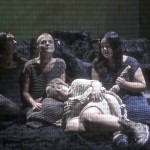
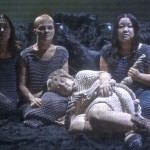
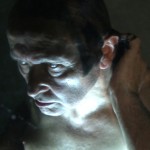
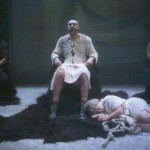
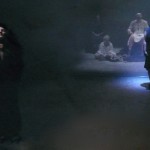
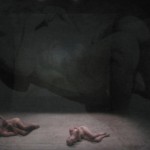
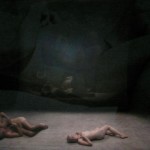
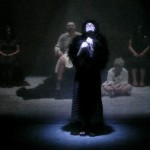
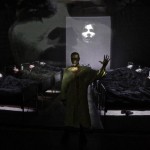

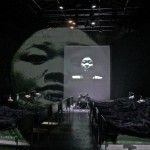
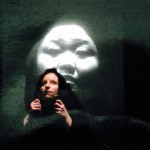



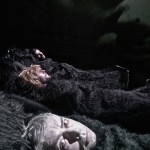
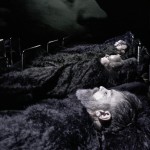
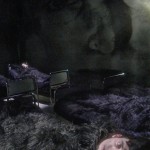
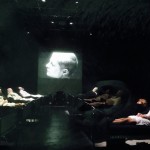
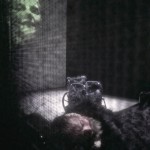
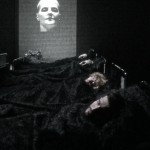
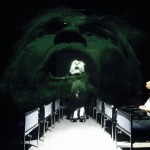
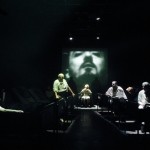

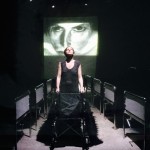
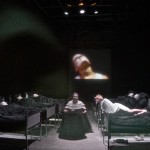
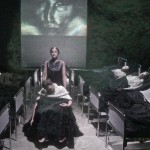
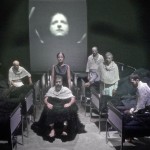
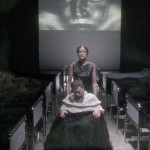
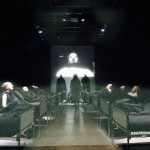
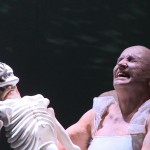
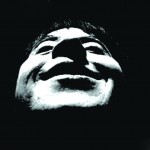
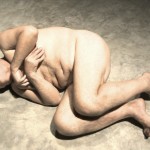
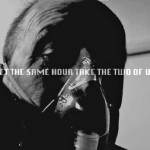
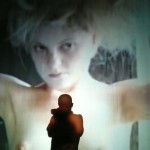


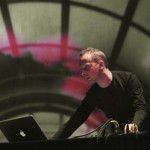
![[cml_media_alt id='4756']Robin Rimbaud this Scanner copy[/cml_media_alt]](https://lenzfondazione.it/wp-content/uploads/2014/11/Robin-Rimbaud-aka-Scanner-copia-300x236.jpeg)

